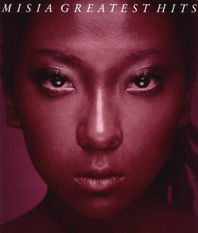Alphabetical Order
How to arrange alphabetically in the Japanese language
It's important to know the alphabetical order in the Japanese language. Dictionaries, phonebooks and lists are all arranged alphabetically. Here you can get the complete list and learn the rules.
How it is called
The alphabetical order is called 五十音順(gojū-on jun) literally means "50 sound order" or あいうえお順(aiueo jun) "aiueo order".
Basic Order
First, you should know the order of 五十音(gojū-on).
あ い う え お
か き く け こ
さ し す せ そ
た ち つ て と
な に ぬ ね の
は ひ ふ へ ほ
ま み む め も
や ゆ よ
ら り る れ ろ
わ を ん
Tips
Always check how the word is spelled in Hiragana.
In Katakana, all long vowels are indicated by "ー". But in Hiragana, they are spelled as they sound - "あ(a)", "い(i)", "う(u)", "え(e)" or "お(o)".
| Katakana | Hiragana |
|---|---|
| ラーメン(rāmen) | らあめん(rāmen) |
| チーズ (chiizu) | ちいず(chiizu) |
| スープ (sūpu) | すうぷ(sūpu) |
| ケーキ (kēki) | けえき(kēki) |
| ソーダ (sōda) | そおだ (sōda) |
Exercise
| Q | Which is in front in alphabetical order, かど(kado) or カード(kādo)? |
|---|---|
| A | カード (かあど in Hiragana). |
Complete Order
There are more letters to be considered.
Complete order with all Hiragana letters is...
あ ぁ い ぃ う ぅ う゛ え ぇ お ぉ
か が き ぎ く ぐ け げ こ ご
さ ざ し じ す ず せ ぜ そ ぞ
た だ ち ぢ つ っ づ て で と ど
な に ぬ ね の は ば ぱ ひ び ぴ ふ ぶ ぷ へ べ ぺ ほ ぼ ぽ
ま み む め も
や ゃ ゆ ゅ よ ょ
ら り る れ ろ
わ を ん
Take this as a general guideline. Some dictionaries arrange by their own way.
If you would like to know the rules, read the following.
Rule 1: 濁音(daku-on)
Letters with dots called 濁音(daku-on) come after their original forms.
For example, the order of は行(ha-gyō) / ha-row after applying this rule is...
は ば ひ び ふ ぶ へ べ ほ ぼ
Exercise
| Q | Which is in front, かけい(kakei) or かげん(kagen)? |
|---|---|
| A | かけい(kakei). |
Rule 2: 半濁音(han-daku-on)
Letters with a circle called 半濁音(han-daku-on) come after their 濁音(daku-on) forms.
For example, the order of は行(ha-gyō) / ha-row after applying this rule is...
は ば ぱ ひ び ぴ ふ ぶ ぷ へ べ ぺ ほ ぼ ぽ
Exercise
| Q | What is the order among てんぷら(tenpura), てんびん(tenbin) and てんぴ(tenpi)? |
|---|---|
| A | てんびん(tenbin), てんぴ(tenpi), てんぷら(tenpura). |
Rule 3: 拗音(yō-on)
拗音(yō-on) ゃ(small ya), ゅ(small yu) and ょ(small yo) come right after their original form.
For example, the order of や行(ya-gyō) / ya-row after applying this rule is...
や ゃ ゆ ゅ よ ょ
Exercise
| Q | What is the order among きんきゅう(kinkyū), きんきょう(kinkyō) and きんきちほう(kinkichihō)? |
|---|---|
| A | きんきちほう(kinkichihō), きんきゅう(kinkyū), きんきょう(kinkyō). |
Rule 4: 促音(soku-on)
促音(soku-on) indicated by っ(small tsu) comes right after its original form つ (tsu).
The order of た行(ta-gyō) / ta-row after applying this rule is...
た だ ち ぢ つ っ づ て で と ど
Exercise
| Q | What is the order among しっぱい(shippai), しゅっちょう(shucchō) and しょっぱい(shoppai)? |
|---|---|
| A | しっぱい(shippai), しゅっちょう(shucchō), しょっぱい(shoppai). |
Rule 5: Other Foreign Sounds
There are some more letters which are developed to describe foreign loaned sounds. In general, these are described only in Katakana.
ぁ(small a), ぃ(small i), ぅ(small u), ぇ(small e) and ぉ(small o) come right after their original forms.
う゛(v) comes after ぅ(small u).
The order of あ行(a-gyō) / a-row after applying these rules is...
あ ぁ い ぃ う ぅ う゛ え ぇ お ぉ
Exercise
| Q | What is the order among スウェット(suwetto), スウェーデン(suwēden), and スヴェンソン(suvenson)? |
|---|---|
| A | スウェーデン(suwēden), スウェット(suwetto), スヴェンソン(suvenson). |










